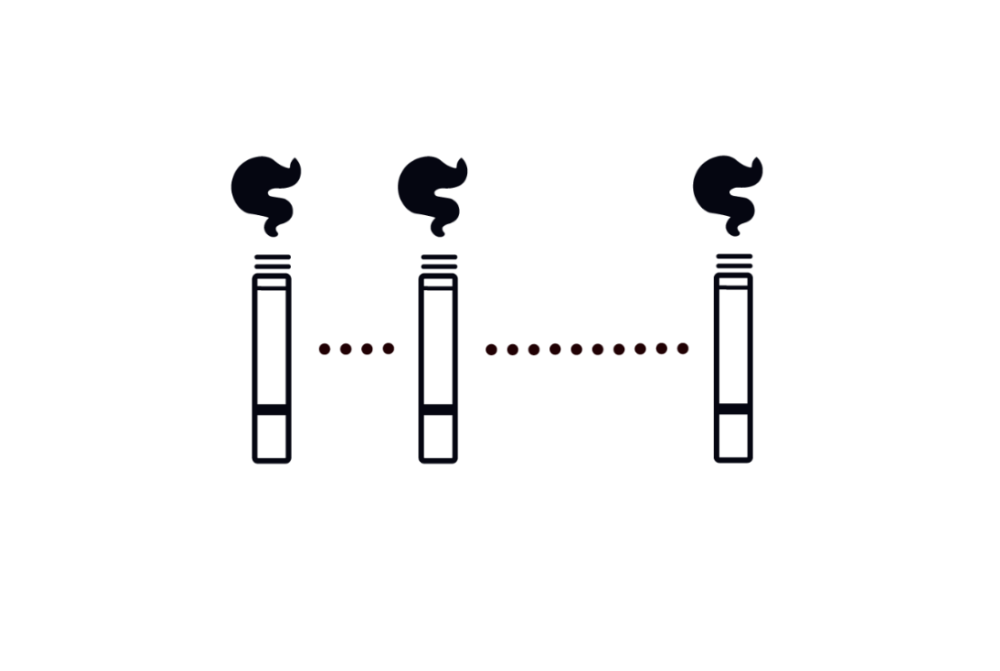What is REDUCE TO QUIT®?
REDUCE TO QUIT® is the use of NRT while gradually cutting back cigarette smoking.1 A quit date is set and treatment is initiated in the pre-quit reduction period. Smokers use an oral NRT treatment whenever they have a craving to prolong smoke-free interval.2
Consider REDUCE TO QUIT® for patients who:

Want to reduce smoking before quitting on a target quit date (TQD)

Want to reduce their smoking, but not set a TQD
FIRST 6 WEEKS | WEEKS 7–16 | WEEKS 17–24 |
|---|---|---|
Easing into it | Cigarettes cut down by 50% | Cigarettes gradually eliminated from the day |
Patients identify the cigarettes that matter least | Eliminate some of the more ‘important’ cigarettes (e.g. first of the day, after meals) | Stay focused on their goal |
Replaced with a short-acting format (e.g. Nicorette QuickMist®, Gum, Lozenge, Inhaler) | Chosen format can be used to help manage cravings and withdrawal symptoms | Patients can stop smoking completely and follow the dosing instructions of the chosen format |
Trying a reduction strategy is better than doing nothing at all. The ultimate goal, however, should be to quit altogether.
Customizing the REDUCE TO QUIT® approach3
Smokers can choose to reduce cigarette smoking in a way that suits them:
Limiting smoking to certain places
Gradually increasing the time between cigarettes
Delaying the first cigarette of the day for as long as possible
Choosing a few specific cigarettes to give up each week
Smoking during only odd or even hours
Not smoking after a certain time of day
Why try REDUCE TO QUIT®?

Almost half of smokers had tried to quit in the past year; nearly 1/3 tried more than once4

Over 2/3 of Canadians, who attempted to quit in the past year used some form of cessation assistance4

May increase the chances of quitting by over 4 times for those who haven’t been able to quit before2*

NICORETTE® Gum can help double the chances of quitting successfully2
* REDUCE TO QUIT® program with Nicorette® Gum.
Make the journey to quit easier with the NICORETTE® Stop Smoking app
Paired with the NICORETTE® QuickMist® SmartTrack™ Mouthspray, this technology can help patients:

Track their progress

Set their own goals

Receive helpful tips on how to stop smoking

Track the number of smoke-free days
References
1. Reid RD, Pritchard G, Walker K, et al. Managing Smoking Cessation. CMAJ 2016;188(17-18): E484-E492. Epub 2016 Oct 3.
2. NICORETTE® Gum Product License. April 29, 2021.
3. Government of Alberta. Smoking fewer cigarettes. 2020. https://myhealth.alberta.ca/Alberta/Pages/How-to-lessen-harm-when-you-dont-want-to-quit.aspx.
4. Reid JL, Hammond D, Burkhalter R, Rynard VL. Tobacco Use in Canada: Patterns and Trends, 2022 Edition. Waterloo, ON: University of Waterloo.
5. NICODERM® Product License. February 16, 2016.
6. NICORETTE® QUICKMIST® Product License. January 18, 2013.
7. NICORETTE® Lozenges Health Canada Product License. 2017.
8. NICORETTE® Inhaler Product License. December 14, 2007.
